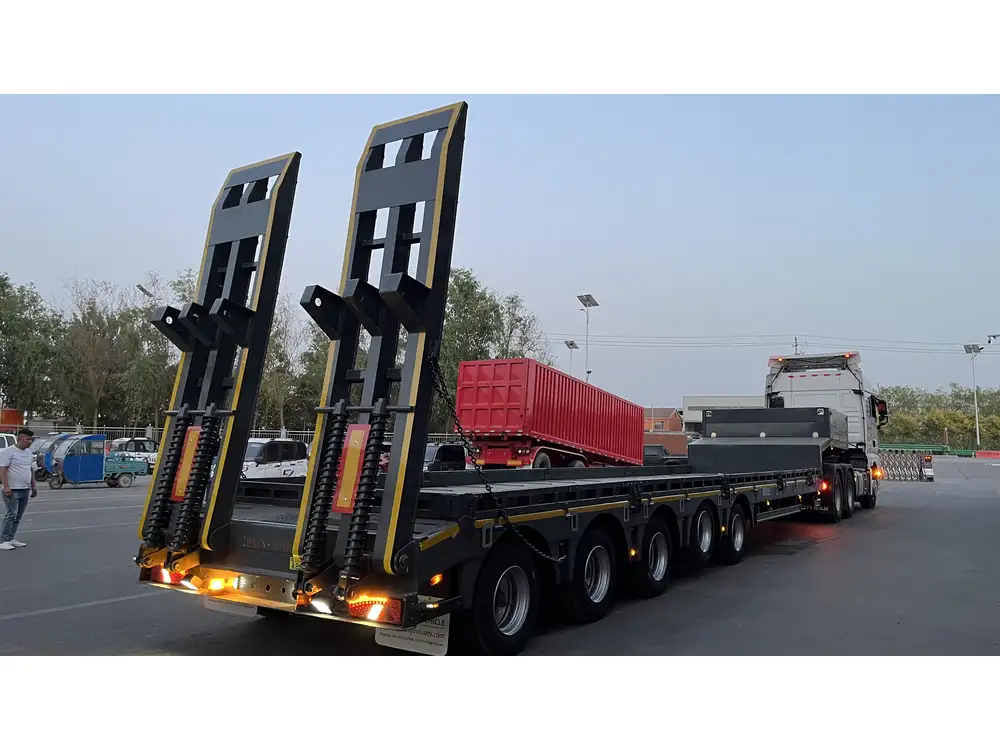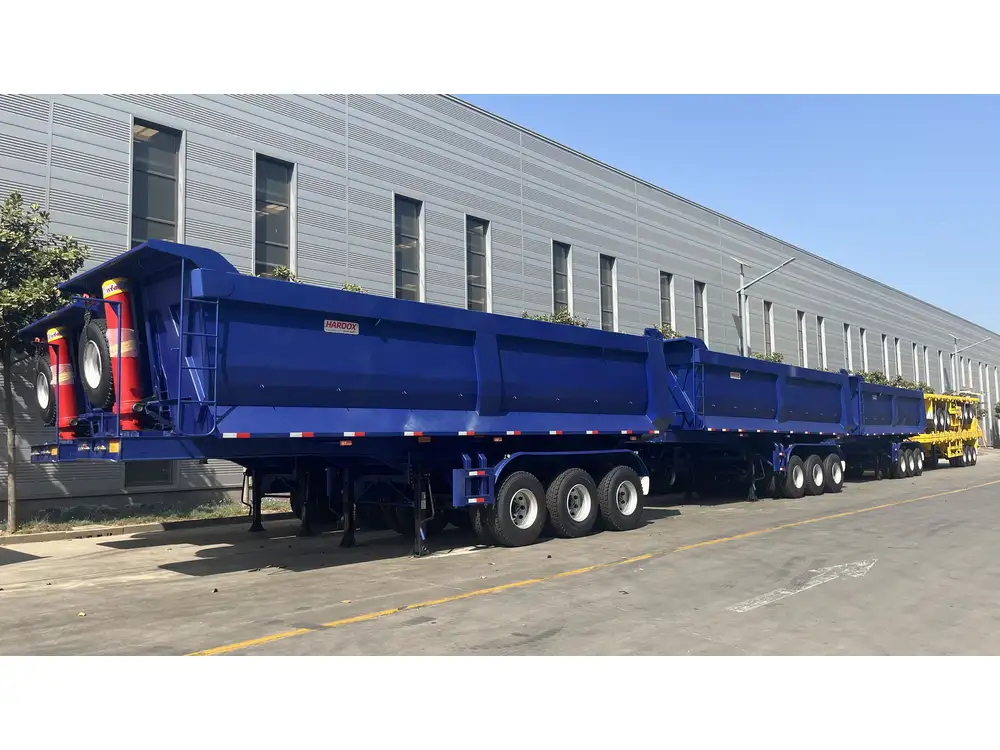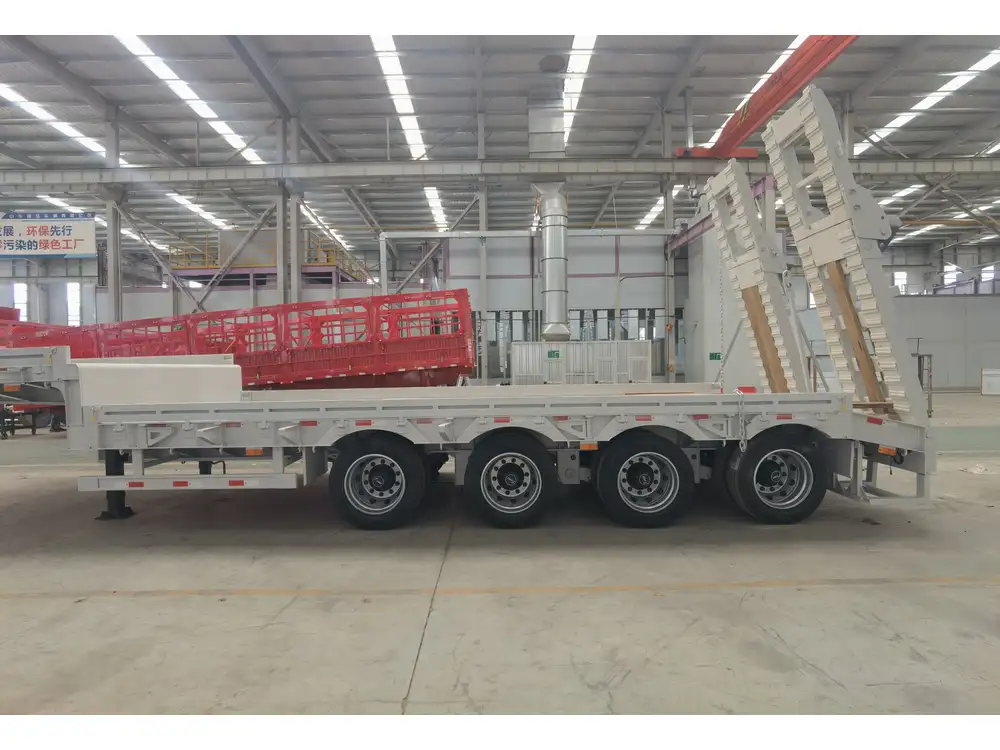When contemplating logistics and transportation, one question often piques curiosity: How many bananas can fit in a semi-trailer? This inquiry goes beyond mere curiosity; it taps into crucial aspects of freight management, maximizing transport efficiency, and understanding everyday goods’ capacity. In this guide, we’ll delve into the factors influencing cargo capacity, provide calculations, and explore the implications for manufacturers and distributors alike.
Understanding the Dimensions of a Semi-Trailer
Before we embark on those calculations, it’s pivotal to understand the standard dimensions and configurations of semi-trailers used in the logistics industry.
Standard Measurements
| Trailer Type | Length (ft) | Width (ft) | Height (ft) | Volume (cubic ft) | Approx. Capacity (lbs) |
|---|---|---|---|---|---|
| Standard Semi | 53 | 8.5 | 13.5 | 4,300 | 45,000 |
| Refrigerated | 53 | 8.5 | 13.5 | 4,300 | 45,000 |
| Flatbed | 48 | 8.5 | 5 | 1,680 | 48,000 |

Typical Volume Calculations
The standard 53-foot semi-trailer possesses a volume of approximately 4,300 cubic feet. Understanding how volumetric capacity translates into weight is crucial for freight transport, considering varying goods’ densities.
Analyzing Banana Dimensions
To determine how many bananas can fit in a semi-trailer, we need to establish the average dimensions and weight of a typical banana.
Average Banana Size
- Length: Approximately 7 inches (0.58 ft)
- Circumference: About 4.5 inches (0.375 ft)
- Weight: Roughly 4.7 ounces (0.293 lbs)

Volume Calculations for Bananas
By calculating the approximate volumes, we derive a formula to understand how many bananas can realistically be loaded into a semi-trailer.
Average Volume of One Banana:
Using the formula for the volume of a cylinder (V = πr²h):
- Radius (r) = circumference / (2π) = 0.375 / (2π) ≈ 0.0599 ft
- Height (h) = length = 0.58 ft
Calculating Cargo Capacity in Bananas
Now we can calculate how many bananas fit in a 53-foot semi-trailer:
- Total Volume of Semi-Trailer: 4,300 cubic ft
- Volume per Banana: 0.01236 cubic ft
- Total Number of Bananas
Weight Considerations for Banana Transport
While the volumetric capacity gives us an idea of quantity, understanding weight restrictions is equally essential in transport logistics.

Total Weight Calculation
- Weight of One Banana: 0.293 lbs
- Total Weight of Bananas:
Semi-Trailer Weight Limitations
Given the weight limit of approximately 45,000 – 48,000 lbs for standard semi-trailers depending on state regulations, the actual number of bananas that can be effectively transported will be much lower:
[ \text{Max Bananas} = \frac{48000}{0.293} \approx 163,163 ]Practical Application in Logistics
Transporting bananas entails more than simple volume and weight calculations; factors such as packaging, temperature control, and time sensitivity significantly influence logistics in the banana supply chain.

Packaging Considerations
Bananas are usually transported in boxes or crates to ensure they remain intact and unbruised. The standard box holds approximately 40 lbs of bananas, translating to about 36 bananas per box. When using boxes, we can factor that into our calculations.
- Total Boxes:
Given the maximum weight limit of 48,000 lbs, the number of boxes transported would be:
[ \text{Total Boxes} = \frac{48000 \text{ lbs}}{40 \text{ lbs/box}} = 1200 \text{ boxes} ]- Total Bananas Transported:
For the total number of bananas transported within these boxes:
[ \text{Total Bananas} = 1200 \times 36 = 43,200 ]Implications for Distribution Networks
The capacity and specification choices come into effect when planning distribution routes for bananas. Proper transportation planning is crucial, primarily when dealing with perishable goods. Here are some factors to consider:
- Lead Time: How quickly do you need the bananas? Perishable goods require rapid transport to prevent spoilage.
- Temperature Control: Refrigerated trucks might be necessary during warmer months to preserve freshness.
- Regulatory Compliance: Ensure all loads adhere to legal weight limits to avoid costly fines.
The Broader Impact of Transportation Decisions
Understanding how bananas and other produce are transported can influence broader industry decisions relating to sustainability, cost-effectiveness, and consumer behavior.

Environmental Considerations
Logistics and transportation contribute significantly to carbon emissions. By optimizing semi-trailer capacities, not only can organizations save costs but also reduce their carbon footprint. Strategies such as:
- Efficient Route Planning: Using software for optimal routing to minimize fuel consumption.
- Consolidation of Loads: Combining shipments can decrease the number of trips and overall emissions.
Economic Factors
Transporting bananas effectively impacts market pricing. The cost of freight influences retail prices. Efficient logistics can help keep prices stable, making fresh produce accessible and affordable for consumers.
Conclusion
In summary, determining how many bananas can fit in a semi-trailer involves understanding dimensional capacities, weight limitations, and practical logistics considerations. While our numerical calculations provide an estimate of 43,200 bananas per trailer with boxes, real-world application factors add complexity. As manufacturers and distributors, leveraging these insights enables improved operational efficiency, sustainability, and responsiveness to market demands. Such knowledge empowers the decision-making process within the global banana supply chain, ultimately driving profitability and consumer satisfaction.
By analyzing these variables with meticulous attention to detail, we can enhance productivity and ensure the banana market operates smoothly, benefiting all stakeholders involved, from growers to consumers.



